
eBook - ePub
Introducing Modernism
A Graphic Guide
Chris Rodrigues,Chris Garratt
This is a test
Buch teilen
- 176 Seiten
- English
- ePUB (handyfreundlich)
- Über iOS und Android verfügbar
eBook - ePub
Introducing Modernism
A Graphic Guide
Chris Rodrigues,Chris Garratt
Angaben zum Buch
Buchvorschau
Inhaltsverzeichnis
Quellenangaben
Über dieses Buch
Modernism is usually thought of as a shock wave of innovations hitting art, architecture, music, cinema and literature - the work of Picasso, Joyce, Schoenberg, movements like Futurism and Dada, the architecture of Le Corbusier, T.S. Eliot's The Wasteland and the avant-garde theatre of Bertolt Brecht or Samuel Beckett. But what really defines modernism? Why did it begin and how long did it last? Is Modernism over now? Chris Rodriguez and Chris Garratt's brilliant graphic guide is a brilliant exploration of the last century's most thrilling artistic work - and what it's really all about.
Häufig gestellte Fragen
Wie kann ich mein Abo kündigen?
Gehe einfach zum Kontobereich in den Einstellungen und klicke auf „Abo kündigen“ – ganz einfach. Nachdem du gekündigt hast, bleibt deine Mitgliedschaft für den verbleibenden Abozeitraum, den du bereits bezahlt hast, aktiv. Mehr Informationen hier.
(Wie) Kann ich Bücher herunterladen?
Derzeit stehen all unsere auf Mobilgeräte reagierenden ePub-Bücher zum Download über die App zur Verfügung. Die meisten unserer PDFs stehen ebenfalls zum Download bereit; wir arbeiten daran, auch die übrigen PDFs zum Download anzubieten, bei denen dies aktuell noch nicht möglich ist. Weitere Informationen hier.
Welcher Unterschied besteht bei den Preisen zwischen den Aboplänen?
Mit beiden Aboplänen erhältst du vollen Zugang zur Bibliothek und allen Funktionen von Perlego. Die einzigen Unterschiede bestehen im Preis und dem Abozeitraum: Mit dem Jahresabo sparst du auf 12 Monate gerechnet im Vergleich zum Monatsabo rund 30 %.
Was ist Perlego?
Wir sind ein Online-Abodienst für Lehrbücher, bei dem du für weniger als den Preis eines einzelnen Buches pro Monat Zugang zu einer ganzen Online-Bibliothek erhältst. Mit über 1 Million Büchern zu über 1.000 verschiedenen Themen haben wir bestimmt alles, was du brauchst! Weitere Informationen hier.
Unterstützt Perlego Text-zu-Sprache?
Achte auf das Symbol zum Vorlesen in deinem nächsten Buch, um zu sehen, ob du es dir auch anhören kannst. Bei diesem Tool wird dir Text laut vorgelesen, wobei der Text beim Vorlesen auch grafisch hervorgehoben wird. Du kannst das Vorlesen jederzeit anhalten, beschleunigen und verlangsamen. Weitere Informationen hier.
Ist Introducing Modernism als Online-PDF/ePub verfügbar?
Ja, du hast Zugang zu Introducing Modernism von Chris Rodrigues,Chris Garratt im PDF- und/oder ePub-Format sowie zu anderen beliebten Büchern aus Art & Histoire de l'art moderne. Aus unserem Katalog stehen dir über 1 Million Bücher zur Verfügung.
Information
Thema
ArtRealizing Modernism
This book will try to answer 15 basic questions on modernism, and is specifically concerned with modernism in the arts.
1. What is modernism?
2. When does modernism begin?
3. What is the difference between modernism and “modernity”?
4. Is modernism just a reaction to modernity?
5. How do we recognize a “modernist” work?
6. Is there a modernist theory in relation to practice?
7. What is the relation of modernism to primitivism?
8. What is the relation of modernism to psychoanalysis?
9. What is the role of the city in modernism?
10. Why are modernists so often “exiles”?
11. What is the role of élites and avant-gardes in modernism?
12. What politics did modernists espouse?
13. How does modernism relate to mass culture?
14. What is the relation of cinema to modernism?
15. Has modernism ended?

THE LAST QUESTION IS A RETURN TO THE FIRST WITH (WE HOPE) A SATISFYING ANSWER TO IT. YOU MIGHT SEE THESE QUESTIONS AS CHAPTERS IN A DETECTIVE NOVEL ...
What is Modernism?
What is the first feature of modernism that is generally acknowledged? Most of us will agree that a modernist work is perceived as difficult, and that its difficulty is associated with unfamiliarity and difference. D.H. Lawrence (1885–1930), who might himself be classified a modernist writer, expressed this feeling of the pleasure and pain of difficulty.
“… to read a really new novel will always hurt, to some extent. There will always be resistance. The same with new pictures, new music. You may judge of their reality by the fact that they do arouse a certain resistance, and compel, at length, a certain acquiescence.”
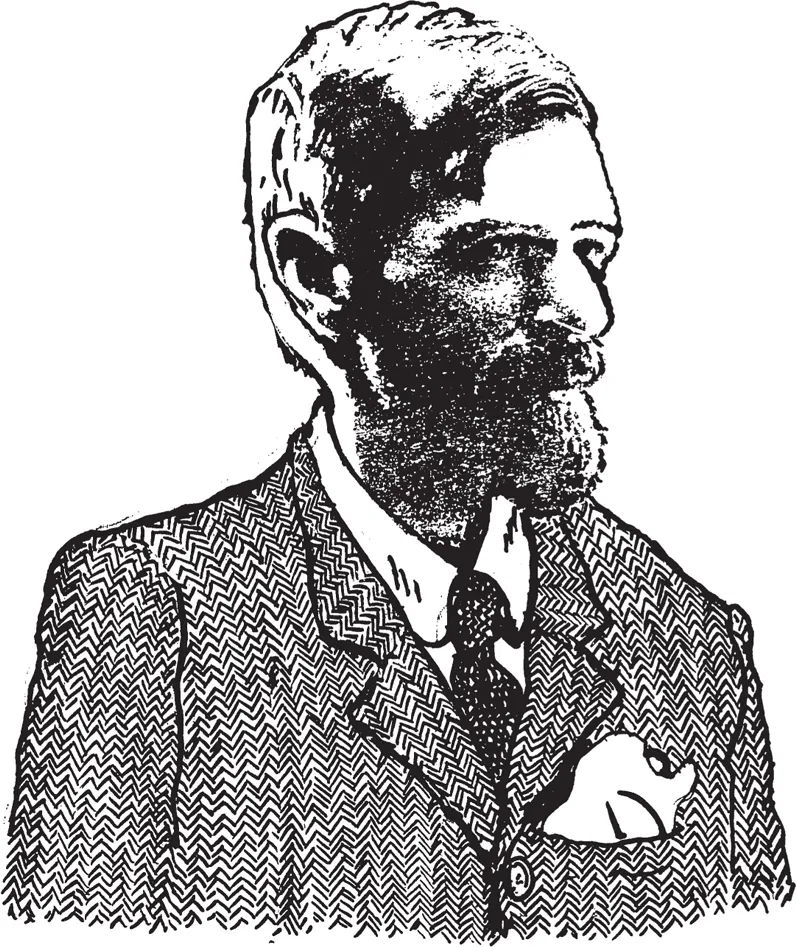
All works that can be accommodated under the umbrella of modernism – or, as we’ll see, schools of modernisms – share a relationship to the modern world which is peculiarly new and exceptional to any other previous cultural and historical condition.
Novelty and difficulty form a special historical alliance. That’s one feature. Another is the reply that most people will give to the question: “What is modernism?” More than likely, they will identify it by naming its icons.

PABLO PICASSO (1881–1973), SALVADOR DALÍ (1904–89), T.S. ELIOT (1888–1965), ARNOLD SCHOENBERG (1874–1951), LE CORBUSIER (1887–1965), KASIMIR MALEVICH (1878–1935).
... EZRA POUND (1885–1972), FRANK LLOYD WRIGHT (1867–1959), MARCEL PROUST (1871–1992), VIRGINIA WOOLF (1882–1941), IGOR STRAVINSKY (1882–1971), RAINER MARIA RILKE (1875–1926) ...
MAN RAY (1890–1976), THOMAS MANN (1875–1955), LEON TROTSKY (1879–1940), ALBAN BERG (1885–1935) ...... ... SHALL WE GO ON?
... EZRA POUND (1885–1972), FRANK LLOYD WRIGHT (1867–1959), MARCEL PROUST (1871–1992), VIRGINIA WOOLF (1882–1941), IGOR STRAVINSKY (1882–1971), RAINER MARIA RILKE (1875–1926) ...
MAN RAY (1890–1976), THOMAS MANN (1875–1955), LEON TROTSKY (1879–1940), ALBAN BERG (1885–1935) ...... ... SHALL WE GO ON?
Interesting reasons can be found – positive and negative – why these names occur. Let’s consider just three from this list.
Media High Profile
What makes an icon? Picasso is likely to be remembered not just because he was a “great artist”. Media notoriety is crucial.
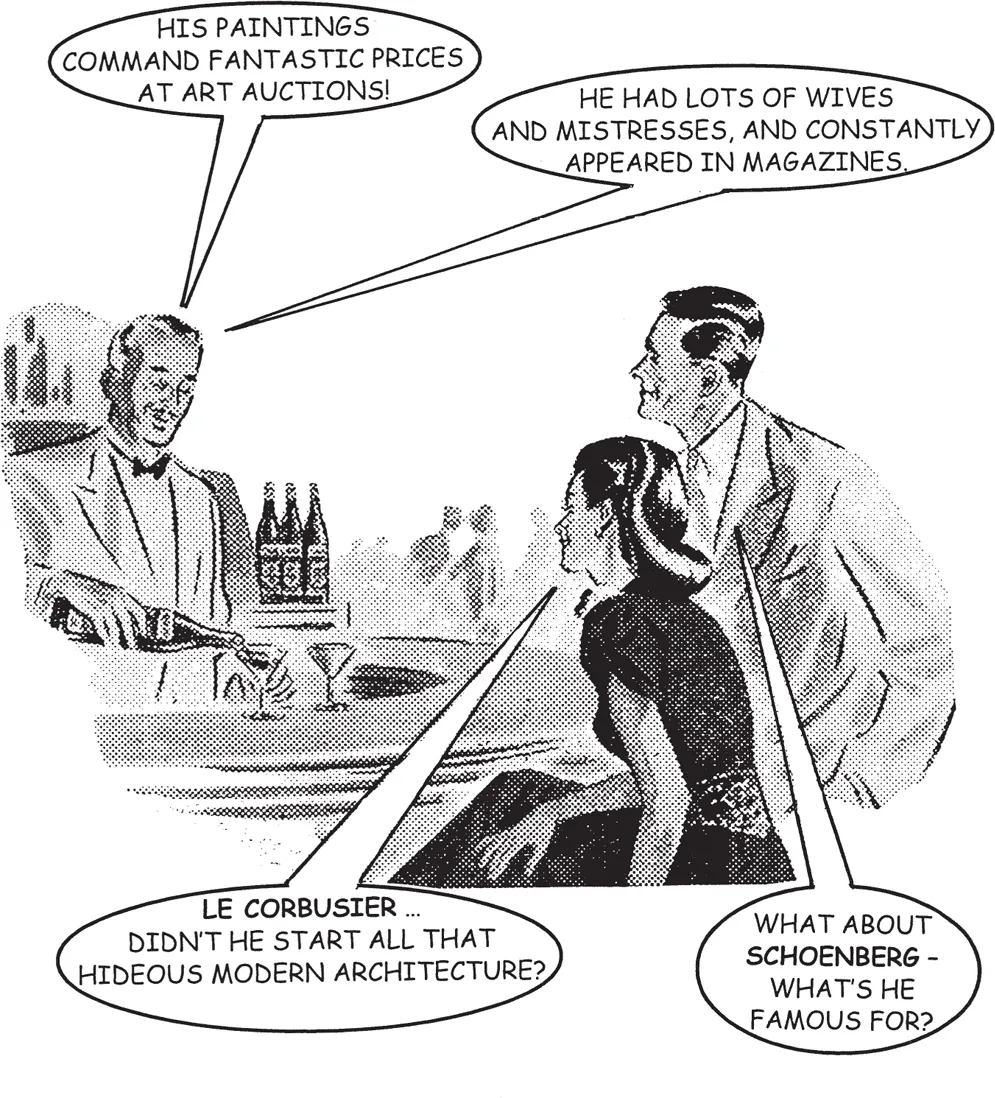
HIS PAINTINGS COMMAND FANTASTIC PRICES AT ART AUCTIONS!
HE HAD LOTS OF WIVES AND MISTRESSES, AND CONSTANTLY APPEARED IN MAGAZINES.
LE CORBUSIER ... DIDN’T HE START ALL THAT HIDEOUS MODERN ARCHITECTURE?
WHAT ABOUT SCHOENBERG – WHAT’S HE FAMOUS FOR?
HE HAD LOTS OF WIVES AND MISTRESSES, AND CONSTANTLY APPEARED IN MAGAZINES.
LE CORBUSIER ... DIDN’T HE START ALL THAT HIDEOUS MODERN ARCHITECTURE?
WHAT ABOUT SCHOENBERG – WHAT’S HE FAMOUS FOR?
Arnold Schoenberg might not figure so high in the media stakes. His brand of (“classical”?) modernist music is, of all the modernisms, the most élitist and remote from the feelings of contemporary society. What does the “a-tonal” style or the “serial” system of composition mean to us? Most of us are happier with less cerebral forms of music that we can still identify as modern.

JAZZ – THAT’S REALLY MODERN!
YES, BUT SO WAS THE TANGO CRAZE OF THE 1920S ...
YES, BUT SO WAS THE TANGO CRAZE OF THE 1920S ...
Keeping up with Fashion
Fashion has the benefit of making us reflect on what modernism isn’t, what it was reacting against, what it intended to replace.

WHAT’S WRONG WITH VICTORIAN VALUES? THE VIRTUES OF COMFORT, SENTIMENT, ESTABLISHED RULES ...
YOU’RE STUFFY, UNSEXY ... UNMODERN!
TRY READING EZRA POUND – VITAMIN C FOR THE SOUL, THAT’S WHAT YOU NEED!
YOU’RE STUFFY, UNSEXY ... UNMODERN!
TRY READING EZRA POUND – VITAMIN C FOR THE SOUL, THAT’S WHAT YOU NEED!
And this might lead us to think of trends or movements characteristic of modernism – for instance, Cubism, Dadaism or Surrealism – instead of simply naming personalities.
Such isms – indeed modernism itself – provide clues to the “spirit of the age’’, the Zeitgeist as it’s often called. Modernism expresses the new energies sweeping through from the late 19th century onwards – the revolutionary potentials opened up by Marx, Freud, Nietzsche and others.
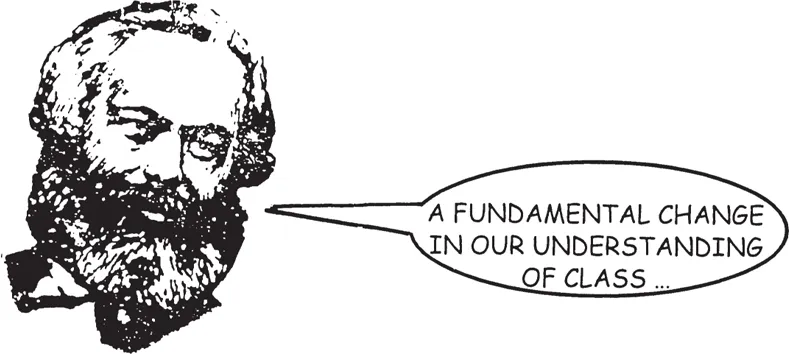
A FUNDAMENTAL CHANGE IN OUR UNDERSTANDING OF CLASS ...

TRANSGRESSION OF PREVIOUS SEXUAL PROTOCOLS AND RULES IN PERSONAL LIFE ...
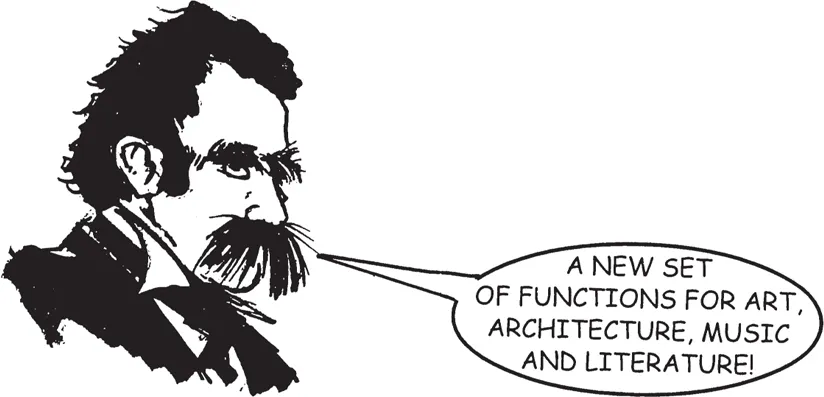
A NEW SET OF FUNCTIONS FOR ART, ARCHITECTURE, MUSIC AND LITERATURE!
So, modernism concerns not only novelty and difficulty, but also a change in social dynamics. Nevertheless, we are still in the realm of generalities. How do we identify the specifics of modernism? Perhaps the question of modernism’s timeliness is a good way to begin.
Chronologies and dates are often seen as the boring bits of cultural history. Stuff we glance at, or skip over, in our hurry to get to the “heart of the matter”. But with accounts of modernism, something strange happens. Dates and starting points begin to matter. The problem with defining modernism is that of fixing a chronology – who did what first, when and where? Establishing the credentials of originality is crucial to modernism.
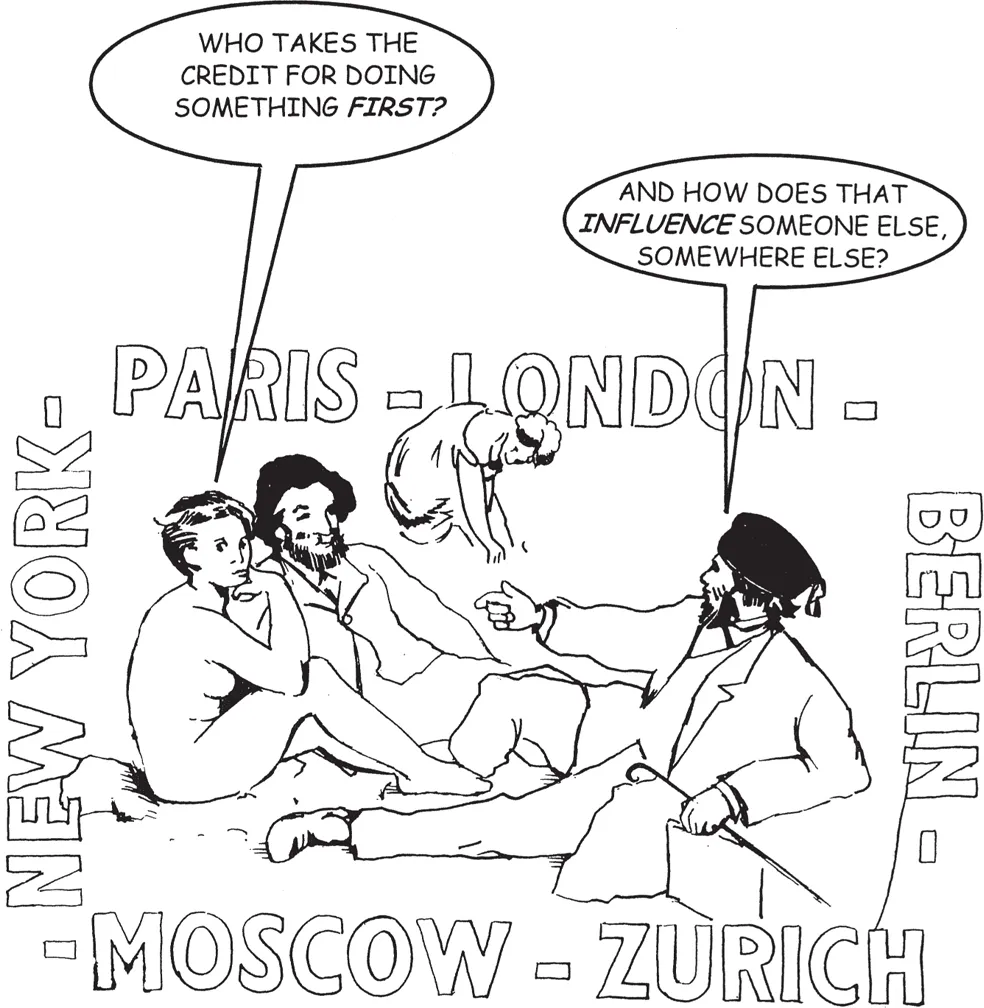
WHO TAKES THE CREDIT FOR DOING SOMETHING FIRST?
AND HOW DOES THAT INFLUENCE SOMEONE ELSE, SOMEWHERE ELSE?
AND HOW DOES THAT INFLUENCE SOMEONE ELSE, SOMEWHERE ELSE?
We can get lost in a complex schedule of “originalities” that pollinate each other across frontiers – but always from one major city to another: Paris, London, Berlin, Moscow, Zurich, New York …
Mode...